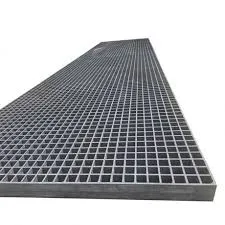
-
 Afrikaans
Afrikaans -
 Albanian
Albanian -
 Amharic
Amharic -
 Arabic
Arabic -
 Armenian
Armenian -
 Azerbaijani
Azerbaijani -
 Basque
Basque -
 Belarusian
Belarusian -
 Bengali
Bengali -
 Bosnian
Bosnian -
 Bulgarian
Bulgarian -
 Catalan
Catalan -
 Cebuano
Cebuano -
 China
China -
 China (Taiwan)
China (Taiwan) -
 Corsican
Corsican -
 Croatian
Croatian -
 Czech
Czech -
 Danish
Danish -
 Dutch
Dutch -
 English
English -
 Esperanto
Esperanto -
 Estonian
Estonian -
 Finnish
Finnish -
 French
French -
 Frisian
Frisian -
 Galician
Galician -
 Georgian
Georgian -
 German
German -
 Greek
Greek -
 Gujarati
Gujarati -
 Haitian Creole
Haitian Creole -
 hausa
hausa -
 hawaiian
hawaiian -
 Hebrew
Hebrew -
 Hindi
Hindi -
 Miao
Miao -
 Hungarian
Hungarian -
 Icelandic
Icelandic -
 igbo
igbo -
 Indonesian
Indonesian -
 irish
irish -
 Italian
Italian -
 Japanese
Japanese -
 Javanese
Javanese -
 Kannada
Kannada -
 kazakh
kazakh -
 Khmer
Khmer -
 Rwandese
Rwandese -
 Korean
Korean -
 Kurdish
Kurdish -
 Kyrgyz
Kyrgyz -
 Lao
Lao -
 Latin
Latin -
 Latvian
Latvian -
 Lithuanian
Lithuanian -
 Luxembourgish
Luxembourgish -
 Macedonian
Macedonian -
 Malgashi
Malgashi -
 Malay
Malay -
 Malayalam
Malayalam -
 Maltese
Maltese -
 Maori
Maori -
 Marathi
Marathi -
 Mongolian
Mongolian -
 Myanmar
Myanmar -
 Nepali
Nepali -
 Norwegian
Norwegian -
 Norwegian
Norwegian -
 Occitan
Occitan -
 Pashto
Pashto -
 Persian
Persian -
 Polish
Polish -
 Portuguese
Portuguese -
 Punjabi
Punjabi -
 Romanian
Romanian -
 Russian
Russian -
 Samoan
Samoan -
 Scottish Gaelic
Scottish Gaelic -
 Serbian
Serbian -
 Sesotho
Sesotho -
 Shona
Shona -
 Sindhi
Sindhi -
 Sinhala
Sinhala -
 Slovak
Slovak -
 Slovenian
Slovenian -
 Somali
Somali -
 Spanish
Spanish -
 Sundanese
Sundanese -
 Swahili
Swahili -
 Swedish
Swedish -
 Tagalog
Tagalog -
 Tajik
Tajik -
 Tamil
Tamil -
 Tatar
Tatar -
 Telugu
Telugu -
 Thai
Thai -
 Turkish
Turkish -
 Turkmen
Turkmen -
 Ukrainian
Ukrainian -
 Urdu
Urdu -
 Uighur
Uighur -
 Uzbek
Uzbek -
 Vietnamese
Vietnamese -
 Welsh
Welsh -
 Bantu
Bantu -
 Yiddish
Yiddish -
 Yoruba
Yoruba -
 Zulu
Zulu
frp tee
Understanding FRP Tee Properties, Applications, and Advantages
Fiber Reinforced Polymer (FRP) is a composite material that is gaining significant traction in various industries due to its remarkable properties, including high strength-to-weight ratio, corrosion resistance, and durability. Among the various shapes and forms in which FRP can be molded, the FRP tee is a prominent type often utilized in construction, industrial applications, and engineering projects.
.
One of the most significant advantages of FRP tees is their lightweight nature. Traditional steel fittings can be cumbersome and challenging to handle during installation, leading to increased labor costs and potential safety hazards. In contrast, FRP tees are considerably lighter, simplifying transportation and installation processes. This lightweight characteristic also contributes to a reduction in the overall load on structures, making them ideal for applications in aerospace, marine, and structural engineering.
frp tee

Moreover, the corrosion resistance offered by FRP tees is unparalleled. Unlike metal fittings that can rust or degrade over time when exposed to moisture or various chemicals, FRP materials remain unaffected, maintaining their integrity and performance for extended periods. This property not only extends the lifespan of the fittings but also minimizes maintenance costs associated with replacements and repairs.
FRP tees are also versatile in their applications. They are commonly used in water and sewage systems, chemical processing plants, and even in the construction of recreational facilities. Their resistance to UV radiation makes them suitable for outdoor applications, ensuring longevity even when exposed to the elements.
Another added benefit comes from the aesthetic appeal of FRP products. Available in various colors and finishes, they can be tailored to meet specific architectural requirements without compromising their structural integrity. This versatility in design allows engineers and architects to create visually appealing installations that blend harmoniously with their surroundings.
In conclusion, FRP tees stand out as an innovative solution for numerous engineering challenges. With their blend of lightweight properties, corrosion resistance, versatility in application, and aesthetic appeal, they present a compelling case for use in modern infrastructure. As industries continue to seek sustainable and efficient alternatives to traditional materials, FRP technology, especially through products like the FRP tee, is poised for significant growth and application in the years to come.
Latest news
-
Exploring the Benefits of Top Hammer Drifter Rods for Enhanced Drilling PerformanceNewsJun.10,2025
-
High-Precision Fiberglass Winding Machine for GRP/FRP Pipe Production – Reliable & Efficient SolutionsNewsJun.10,2025
-
FRP Pipes & Fittings for Shipbuilding - Corrosion-Resistant & LightweightNewsJun.09,2025
-
Premium FRP Flooring Solutions Durable & Slip-ResistantNewsJun.09,2025
-
Premium Fiberglass Rectangular Tanks Durable & Lightweight SolutionNewsJun.09,2025
-
Tapered Drill String Design Guide Durable Performance & UsesNewsJun.09,2025









